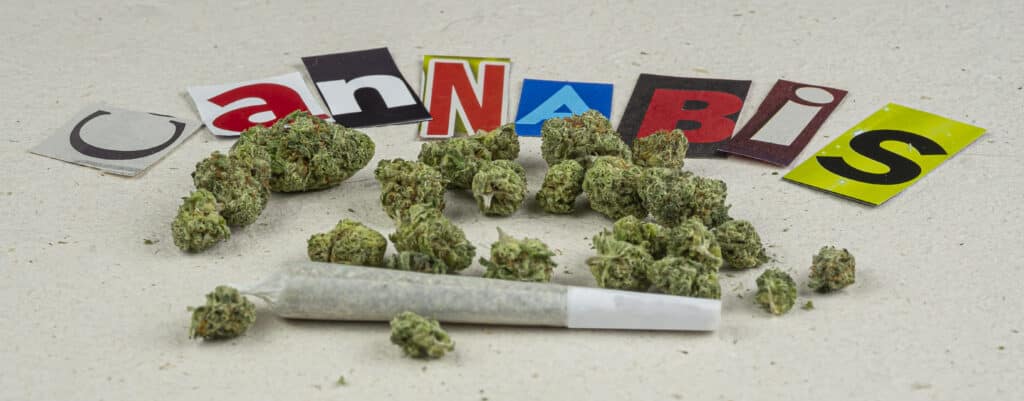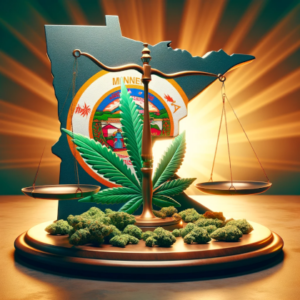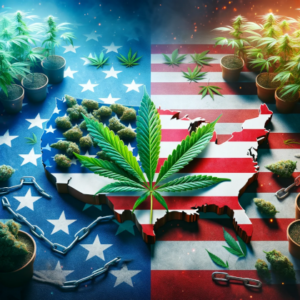
A Beginners Guide To Using Cannabis
What is cannabis?
Table of Contents
If you’re not familiar with medical marijuana you would be forgiven for thinking it’s like other herbal remedies. Cannabis is much more complicated than herbs like willow bark (pain reducer/anti-inflammatory), valerian (anxiety), St. John’s wort (depression), ginseng (boosts alertness), chamomile (sleep aid), ashwagandha (energy), cat’s claw (blood pressure), black cumin (seizures/spasms), and the list goes on. Amazingly, compounds found in cannabis can help with all of these issues. (Results depend on the patient’s condition.)
So what makes cannabis such a powerful herbal remedy? Before we answer that, let’s just take a moment to talk about what cannabis actually is.
The Latin word “cannabis” and its ancient equivalents (such as the ancient Greek “kánnavis” and Persian “kanab”) is as old as civilization itself. Cannabis is thought to be one of the first crops to be cultivated by humankind. Humans have always found cannabis valuable as a food source, a medicinal herb, and also for its strong fibers used in textiles, rope, and building materials.
Categories of cannabis
In modern times, humans have developed three distinct categories of cannabis cultivars bred specifically to serve each of these needs.
- Industrial hemp — used for textiles and building materials
- Seed hemp — grown for its copious and nutritious seeds
- CBD hemp — medicinal but non-intoxicating
- Marijuana — valued for its medicinal and intoxicating properties
Marijuana and CBD hemp are both used in medicine. The only real difference between CBD hemp and marijuana is that CBD hemp does not contain the intoxicating compound commonly known as THC.
Marijuana is a product, not a plant
It’s important to point out that marijuana is not a plant. It’s a product of a plant just like corn is the product of the maze plant.
Marijuana refers specifically to the resinous, aromatic flower clusters of the unpollinated female cannabis plant. (A pollinated female cannabis plant produces seeds, not buds.)
Marijuana is infamous for its THC content. (THC stands for delta-9 tetrahydrocannabinol.) However, over the past half-century, strains of marijuana have been developed that don’t contain THC but are high in non-intoxicating cannabinoids such as CBD and CBG.
Unfortunately, as laws have been written to regulate the crop, these THC-free strains have been lumped in with the hemp category. CBD hemp looks, smells, and is cultivated just like marijuana. It looks nothing like industrial hemp (which has little to no medicinal value).
Cannabinoids are the key
THC is one of several compounds produced in cannabis called phytocannabinoids — or cannabinoids produced in plants. Today we also have synthetic cannabinoids known as exogenous cannabinoids. It’s not important that you remember these big words. What’s important to understand is that the human body also produces cannabinoids called endocannabinoids that help to regulate a wide array of bodily functions. And that the cannabinoids produced in cannabis have the ability to mimic the effects of our own natural endocannabinoids to some extent — thus their medicinal value.
Another important distinction here is that marijuana is federally illegal. All forms of hemp — including CBD hemp — are legal. In order to legally buy marijuana or THC-infused medicines, you need to shop at a state-licensed dispensary. Several states only allow residents with medical marijuana cards to shop at local dispensaries. Others allow adults over 21 to buy products containing THC at dispensaries.
CBD hemp is a different story. Anyone can buy CBD online or in local shops without a medical marijuana card. This includes THC-free, dried, raw hemp flower and all products infused with hemp-derived cannabinoids.
Terpenes are important too
Cannabis buds also produce a second category of medicinal compounds known as terpenes. Terpenes are the aromatic oils that give cannabis strains their distinctive aromas and flavors. Scores of terpenes are produced in cannabis. Not only does each have its own distinct scent, but they also have different medicinal properties. You may have heard of a healing modality known as aromatherapy which uses terpene-rich oils to treat an array of ailments.
Just as they produce different combinations of cannabinoids, each cannabis strain also produces a unique mixture of terpenes. And the effects of each strain are just as much dependent on terpene content as on cannabinoid content.
In this article, we’re not going to get into the health benefits of each cannabinoid and terpene. The ideal combination of cannabinoids and terpenes depends on the patient and the condition being treated.
Click here for a comprehensive list of the various medical conditions being treated with cannabis.
What types of cannabis medications are available?
As you can see from what we’ve outlined above, cannabis is much more complicated than common herbal remedies. Medical marijuana patients have thousands of strains to choose from, each with its own combination of cannabinoids and terpenes.
But we still haven’t gone all the way down the rabbit hole. Cannabinoids and terpenes can be extracted from marijuana and used to make a wide array of cannabis-infused medicines. And there are several delivery methods from which to choose. Each formula and delivery method presents its own pros and cons.
Some cannabis delivery methods include:
- Dried flower — for smoking, vaping, and cooking
- Cannabis concentrates — also for smoking, vaping, dabbing, and cooking
- Cannabis oils and tinctures — used orally and sublingually
- Cannabis pills — capsules, gel caps, tablets, etc.
- Cannabis edibles — foods and beverages infused with cannabinoids, great for treating conditions of the stomach and intestines.
- Cannabis topicals — cannabis-infused skin creams, lotions, ointments, balms, and salves are ideal for skin conditions.
- Cannabinoid patches — transdermal patches containing cannabinoids are ideal for constant delivery and systemic effects
- Cannabinoid inhalers — atomizers containing cannabinoids offer fast onset of effects
- Cannabis suppositories — made specifically for rectal use are good for treating bowel conditions.
That’s quite an array of delivery methods. However, we’re still not done exploring. Each of these delivery methods can be made in a veritably infinite array of formulas.
- Flower strains — vary in cannabinoid and terpene content
- Full-spectrum products — cannabinoid and terpene content varies according to the strain from which the product was produced
- Broad-spectrum products — made by mixing various cannabinoids, terpenes, and sometimes additional beneficial herbs
- Cannabinoid isolates — purified cannabinoids such as THC, CBD, etc.
Oils, tinctures, edibles, topicals, and suppositories can be made with any formulation of cannabinoids and terpenes including terpene-free isolates. However, patches and inhalers are generally produced using only purified cannabinoids
Marijuana strains — sativas, indicas, and hybrids
Dispensaries usually categorize marijuana strains by their origins.
- Indica strains — Native to Asia, indica strains are high in the terpenes myrcene, beta-caryophyllene, linalool, limonene, and humulene. Indicas are well-known for their sedative effect and excessive use can cause “couch lock.” Indica strains that are high in THC, myrcene, and secondary cannabinoids are best suited for nighttime use and for treating conditions such as insomnia and chronic pain. Some popular indica strains include Hindu Kush, Northern Lights, Granddaddy Purple, Purple Punch, Ice Cream Cake, and Zkittlez.
- Sativa strains — Native to the Americas, sativa strains are generally high in THC but low in secondary cannabinoids. The main terpenes found in sativa strains are limonene and pinene. Sativa strains are less likely to cause couch lock and are thus more suitable for times when the user needs to be active and creative. Some popular sativa strains include Green Crack, Durban Poison, Super Silver Haze, Sour Diesel, Strawberry Cough, and Blue Dream.
- Hybrid strains — Over the past few decades, cannabis breeders have cultivated a wide array of strains that have both indica and sativa genetics. Some are closer in effects to indica strains and some are more akin to sativa strains. Some are considered to be indica-dominant and some are sativa-dominant. Over the years there has been so much interbreeding that the terms can be misleading. The important thing to look for when choosing a hybrid strain is the terpene and cannabinoid content. Some popular hybrid strains include OG Kush, Chem Dog, White Widow, Gorilla Glue, Wedding Cake, and Jack Herer.
Strains can also be categorized by their THC and CBD content. These are the two most dominant cannabinoids. However, there are also strains that are high in CBG and other minor cannabinoids.
High-THC, High-CBD, and balanced strains
Keep in mind that there’s a limit to how much cannabinoids a strain can produce. The top end is around 30% cannabinoids by weight. This is important because strains with 30% THC cannot contain much if any of the other cannabinoids. And strains that are close to 30% CBD will contain little if any THC. And a strain with equal amounts of THC and CBD will contain less than 15% of each.
- High-THC, low-CBD strains — THC is best known for its ability to improve mood and when used properly can go a long way toward reducing depression. It’s also a good pain reliever and anti-inflammatory. However, consuming too much THC can result in feelings of anxiety and paranoia. Some popular high-THC strains include Godfather OG (indica), Irish Cream (indica), Ghost Train Haze (sativa), Trainwreck (sativa), Bruce Banner #3 (sativa), and Chemdawg (hybrid).
- High-CBD, low-THC strains — Strains that are high in CBD are known for their ability to reduce anxiety and induce relaxation. Hemp strains that contain less than 0.3% THC are legal outside of marijuana dispensaries in most states and are non-intoxicating. Overconsumption of CBD can result in lethargy. Some popular high-CBD strains include Remedy, ACDC, Charlotte’s Web, Cherry Wine, Ringo’s Gift, Harle-Tsu and Sour Tsunami.
- Balanced strains — Cannabis strains are also available in a wide range of cannabinoid ratios. Some have equal amounts of THC and CBD. Some are higher in one than the other. Marijuana strains with any amount of THC, even low-THC strains can be intoxicating when consumed in sufficient quantities. Some popular balanced strains include Argyle, Dancehall, Sweet and Sour Widow, Cannatonic, Pennywise, and Mango Haze.
The decision as to which cannabinoids and terpenes will offer the greatest benefit requires research, expert advice, and some experimentation. Patients should consult with a qualified medical marijuana doctor regardless of whether or not they intend to use THC. Budtenders at medical marijuana dispensaries nationwide can also be quite helpful in explaining the effects of various strains and formulas.

Which cannabis medication is right for me?
Apart from cannabinoid and terpenes content, here are some other considerations to take into account when choosing a delivery method.
Formula (cannabinoid and terpene ratios)
Complicating matters, cannabinoids and terpenes affect each patient differently. For example, some patients find that THC causes them to have feelings of anxiety, in which case a hemp-derived product is preferable. Some might find that CBD makes them lethargic. Some patients might have allergic reactions to certain terpenes. Individual terpenes can also enhance or reduce certain medicinal effects. As mentioned above, determining the ideal formula and dosage will take some research, professional advice, and experimentation.
Onset time
Some cannabis products work quickly, others take time. Specifically, all inhalation methods — smoking, vaping, dabbing — offer high potency and fast onset of effects. This is because the cannabinoids and terpenes are absorbed directly into the bloodstream via the lungs. A fast onset time is important for treating certain conditions such as acute pain, panic attacks, seizures, etc. However, patients with heart and lung conditions should avoid smoking, vaping, and dabbing.
All other delivery methods offer various onset times and levels of bioavailability. Tinctures, when used sublingually, offer a relatively fast onset time compared to oral delivery (capsules, edibles, etc.). The onset time of capsules and edibles depends highly on whether or not they are taken with a meal or contain complex carbs. Candies and capsules melt quickly on an empty stomach and provide a faster onset time than baked goods or medicines taken with a meal. Edibles also have a lower bioavailability than inhalation methods as much of the cannabinoid content is absorbed into fatty tissues in the digestive system.
Convenience and discretion
Some cannabis delivery methods are more convenient and offer more discretion than others. Smoking and dabbing aren’t very convenient or discreet. These methods require special equipment and can be messy and smelly. Vaping and inhalers are a little less inconvenient. Edibles and capsules are the most convenient and discreet cannabis delivery methods.
Dosage accuracy
Accurate dosing is important for treating chronic conditions. Products such as tinctures, tablets, capsules, and edibles should offer highly accurate dosing. Dosages and recommended serving sizes should be listed on the product label or package. Inhalers and patches also provide accurate dosing. Because everyone’s inhalation procedures are unique (eg: smoking method, the size of each hit, holding time, etc.) it’s a bit more difficult to accurately determine dosage when smoking and vaping, it is possible to make a ballpark guess if you can do some math.
Conclusion
To wrap up this guide let’s reiterate a few facts about medical marijuana:
- Marijuana is not a plant. The term refers specifically to the female flowers of the cannabis plant.
- Cannabinoids produced in marijuana have the ability to mimic our own naturally produced endocannabinoids and produce a wide range of physical effects.
- Terpenes, the oils that give marijuana its aroma, are also important in determining the effects of marijuana strains.
- Marijuana strains come in a myriad of cannabinoid and terpene ratios.
- Cannabinoids and terpenes can be extracted from marijuana and used to make concentrates, edibles, tinctures, and other medical marijuana products.
- Factors to be considered when choosing a delivery method include the ratio of terpenes and cannabinoids, the onset time, convenience, discreetness, and accuracy of dosage.
And finally, it’s important to state that medical marijuana patients should not be self-medicating and are advised to seek the advice of a qualified medical marijuana doctor before undertaking any cannabis-based treatment.









